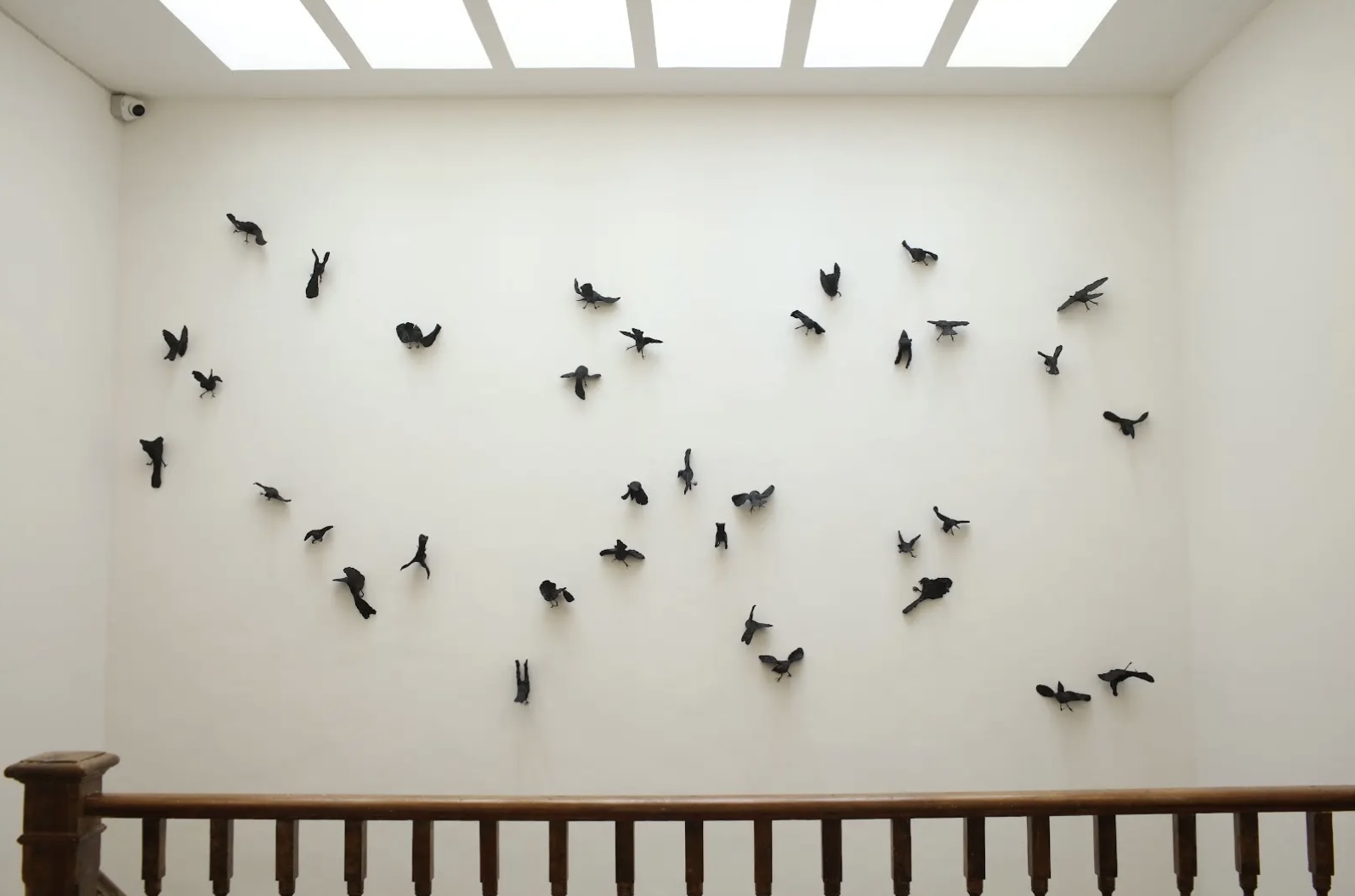
Floria González & Sandra Leal
The Four Seasons: Anomalies
Closing
-> Aug 14
For the closing of the exhibition The Four Seasons: Anomalies, JO-HS presents a guided tour with the artists, Floria González and Sandra Leal, as well as the curator, Luis Manuel Perea.
In this exhibition, Floria González and Sandra Leal reinterpret time and nature through a contemporary and speculative lens, offering a journey through the seasons by way of chromatic palettes, animal symbols, human figures, and abstract entities. Natural patterns are disrupted; they no longer govern order—they are shaped by the tensions of a new era: technological, biological, energetic. The paintings explore the possibility that we are witnessing a consciousness evolution, accelerated by artificial intelligence, and with it, a reconnection with the spiritual through new dimensions. Quantum physics, medical advances, and computer science alter our perception of time, our environment and our bodies. Here, the prophetic and the poetic are interwoven. Each season vibrates with its own palette and its own anomaly: a distortion in perceptual reality that opens new forms of existence and ritual.
SUMMER – "The Floral Consciousness Awakens"
At the heart of summer, something is activated: an ancestral intelligence — animal, organic, artificial — begins to vibrate in sync.
Floria González’s work presents recognizable figures: an electric yellow wolf, a cat camouflaged among the flora – guardians of a new sensorial era. Meanwhile, Sandra Leal depicts bodies and energy fields without clear borders, like neural landscapes of a world that no longer distinguishes the human from the synthetic.
Summer here is not just a season: it is a frequency. Vibration in itself. A mutated flower blooming from information.
AUTUMN – "Codes Become Rituals"
In autumn, it’s not only the trees that shed their leaves: structures unravel. Archetypal figures emerge — rabbit-children, digital pilgrims — walking toward a forest in flames. Floria González depicts a ritual with no name, while Sandra Leal distorts the organic until it becomes a code, as if an ancestral consciousness spoke through reconfigured natural patterns.
One figure holds a shark as a totem. Another carries a tiger on their back. Animals charged with symbolic power emerge from the spiritual and the digital. Faces blur into red masses, ancient celebrations are recalled as glitches.
WINTER – "The Simulation Enters Suspension"
The winter in this exhibition is not just a season: it is a state of being. Here, the world seems to have stopped. Figures lose their faces. Time dissolves. Everything is waiting.
Floria González presents spectral scenes where humanity has lost identity. A faceless child rides a horse by the sea. A family watches, emotionless, as a boat burns in the distance. Beneath an umbrella, bodies blend with waves while black birds fly overhead like ominous beings. Everything takes place within a parallel reality.
Sandra Leal responds with vortices, altered tides, and scattered energy fields. Her works resemble emotional maps of a reprogrammed nature.
This winter is not death: it is a new beginning. A sea of memory where the latent code of what we will become floats.
SPRING – "The Anomalous Bloom"
Spring is not an innocent celebration of rebirth. It is a cosmic birth with ambiguous undertones. What germinates here doesn’t follow ancient cycles: it is hybrid, synthetic, altered.
In Floria González’s work, a serene scene is contaminated by fire: a castle burns while a family sails in silence. Nature blooms, but it is no longer the same. In Sandra Leal’s works, the line moves like a vegetal nervous system, as if the earth was speaking a new language. Pinks, purples, and greens intertwine like botanical codes.
The anomaly is this: what once symbolized hope now becomes mystery. The flowers no longer smell the same. Fire mixes with sap. Something new is born, but no one can say whether it is human, organic, or machine.
Epilogue
As an experiment, this text was created collaboratively by the artists and ChatGPT—one of the many artificial intelligences that have altered our reality and perception. In this process, authorship becomes blurred; it is no longer possible to trace where one entity ends and the other begins. This very collaboration becomes part of the anomaly explored throughout the exhibition.
In this liminal space between human and machine, between intention and algorithm, we find ourselves forging new rituals—conscious or not—that reflect the hybrid nature of our time. The anomaly is no longer just within the artwork, but within us: in the way we process meaning, memory, and material.
Perhaps the glitch is not something to be corrected, but a portal—one that leads us toward other forms of perception. And as we move through this world where nature is duplicated, augmented, or replaced, we might ask: how do we grieve the organic, even as we construct its synthetic twin? What begins as a collaboration becomes a mirror, reflecting a world in transformation—a world where the flowers no longer smell the same, and yet something still blooms.
–JO-HS